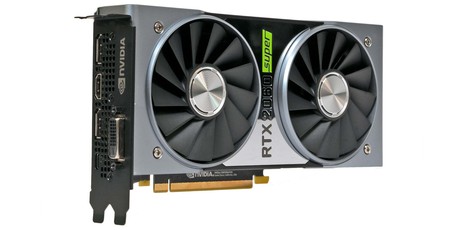
Manufacturer: Nvidia
UK price (as reviewed): MSRP £379 (inc. VAT)
US price (as reviewed): MSRP $399 (exc. tax)
In anticipation of AMD launching an attack on the lower half of Nvidia’s RTX 20 Series stack on July 7th, Nvidia has brought the launch of two RTX Super parts forward by a week, irking technical press the world over but more importantly stealing headline space and perhaps applying pressure on AMD’s Navi pricing strategy before the cards even launch.
The RTX 2060 Super and RTX 2070 Super are “launching” today for $399 and $499 respectively (on-shelf date is July 9th), and the RTX 2080 Super is set to launch on July 23rd for $699. The new cards are not simply overclocked versions of their older namesakes; Nvidia is actually using new configurations of existing GPUs to target new price/performance levels. All three cards will launch as distinct entities rather than directly replacing anything in the stack, but it looks like RTX 2070 and RTX 2080 will both be phased out pretty sharpish.
Below you can get a sense of how the new products slot into the stack, excluding RTX 2080 Super, since Nvidia has only confirmed high-level specs for that so far. The table will make a lot more sense if you’re already familiar with the Turing architecture.
| Nvidia GeForce RTX 2080 Ti | Nvidia GeForce RTX 2080 | Nvidia GeForce RTX 2070 Super | Nvidia GeForce RTX 2070 | Nvidia GeForce RTX 2060 Super | Nvidia GeForce RTX 2060 | |
|---|---|---|---|---|---|---|
| Architecture | Turing | Turing | Turing | Turing | Turing | Turing |
| Codename | TU102 | TU104 | TU104 | TU106 | TU106 | TU106 |
| Base Clock | 1,350MHz | 1,515MHz | 1,605MHz | 1,410MHz | 1,470MHz | 1,365MHz |
| Boost Clock | 1,545MHz | 1,710MHz | 1,770MHz | 1,620MHz | 1,650MHz | 1,680MHz |
| Layout | 6 GPCs, 68 SMs | 6 GPCs, 46 SMs | 5 or 6 GPCs, 40 SMs | 3 GPCs, 36 SMs | 3 GPCs, 34 SMs | 3 GPCs, 30 SMs |
| CUDA Cores | 4,352 | 2,944 | 2,560 | 2,304 | 2,176 | 1,920 |
| Tensor Cores | 544 | 368 | 320 | 288 | 272 | 240 |
| RT Cores | 68 | 46 | 40 | 36 | 34 | 30 |
| Texture Units | 272 | 184 | 160 | 144 | 136 | 120 |
| ROPs | 88 | 64 | 64 | 64 | 64 | 48 |
| L2 Cache | 5.5MB | 4MB | 4MB | 4MB | 4MB | 3MB |
| Peak TFLOPS (FP32) | 13.4 | 10 | 9.1 | 7.5 | 7.2 | 6.2 |
| Peak TIPS (INT32) | 13.4 | 10 | 9.1 | 7.5 | 7.2 | 6.2 |
| Peak FP16 Tensor TFLOPS (FP16 Accumulate) | 107.6 | 80.5 | 72 | 59.7 | 57.4 | 51.7 |
| Giga Rays/sec | 10 | 8 | 7 | 6 | 6 | 5 |
| Transistors | 18.6 billion | 13.6 billion | 13.6 billion | 10.8 billion | 10.8 billion | 10.8 billion |
| Die Size | 754mm2 | 545mm2 | 545mm2 | 445mm2 | 445mm2 | 445mm2 |
| Process | 12nm FFN | 12nm FFN | 12nm FFN | 12nm FFN | 12nm FFN | 12nm FFN |
| Memory | 11GB GDDR6 | 8GB GDDR6 | 8GB GDDR6 | 8GB GDDR6 | 8GB GDDR6 | 6GB GDDR6 |
| Memory Data Rate | 14Gbps | 14Gbps | 14Gbps | 14Gbps | 14Gbps | 14Gbps |
| Memory Interface | 352-bit | 256-bit | 256-bit | 256-bit | 256-bit | 192-bit |
| Memory Bandwidth | 616GB/s | 448GB/s | 448GB/s | 448GB/s | 448GB/s | 336GB/s |
| TDP | 250W | 215W | 215W | 175W | 175W | 160W |
While it technically sits in between the RTX 2060 and RTX 2070, the RTX 2060 Super is actually much closer to the latter card on paper. The TU106 GPU in this configuration has four more SMs enabled than RTX 2060, bringing about a 13 percent increase in CUDA Cores, Tensor Cores, RT Cores, and texture units and leaving it just two SMs shy of RTX 2070’s count of 36 (less than six percent difference).
The memory and back-end situations are all RTX 2070 as well. This is a big jump, as the new card has a one-third increase across the board when it comes to L2 cache, ROPs, GDDR6, and available memory bandwidth, so it’s likely we’ll see better scaling at higher resolutions where these elements tends to play a greater role.
With the new card’s TDP also matching RTX 2070, really the only tangible difference between them are those two SMs, and Nvidia will make up some of that difference with the slightly higher clock speeds. Indeed, Nvidia itself reckons there will only be a mere one percent performance difference between the two parts at 1440p, and has also suggested that it’s capable of GTX 1080 levels of performance or more. In a nutshell, this is RTX 2060 Super’s key pitch: bringing RTX 2070/GTX 1080 performance down to $399 for the first time; remember these two cards launched at $499 and $599 respectively.
At the time of writing, there has been no sign of a price drop on the $349 RTX 2060, but we’re not sure how long it’ll be able to remain there when supposedly RTX 2070 levels of performance are just $50 more. Given that AMD will very soon launch its $379 Navi-based Radeon RX 5700, it’s plausible Nvidia is holding onto this particular card until it can work out an optimal strategy to undermine AMD’s efforts. For those of you with tighter budgets, this could also impact the non-RTX Turing parts as well, but that’s pure conjecture.
For this launch, Nvidia is furnishing press with Founders Edition cards for initial reviews and delaying third-party card reviews until July 9th, at which point all models should be available to buy. Since the FE cards are not overclocked this time around and will hit MSRP, this ensures the RTX Super narrative gets underway with reference cards at reference pricing rather than a whole bunch of potentially very expensive cards confusing matters.
The RTX 2060 Super Founders Edition is examined more closely below, but there are no real changes compared to the RTX 2060 FE and RTX 2070 FE designs, so feel free to skip ahead.
The Card
The RTX 2060 Super Founders Edition shares its card design with, unsurprisingly, the RTX 2070 Founders Edition (and also RTX 2060 FE). The two-tone aluminium looks excellent, but why Nvidia thought it would be a good idea to make the ‘Super’ branding bright green is beyond us. It’s a small detail, but to us it really spoils the look. Yes, there are green LEDs on the top GeForce RTX logo (on the same edge as the power connector), but these can be disabled.
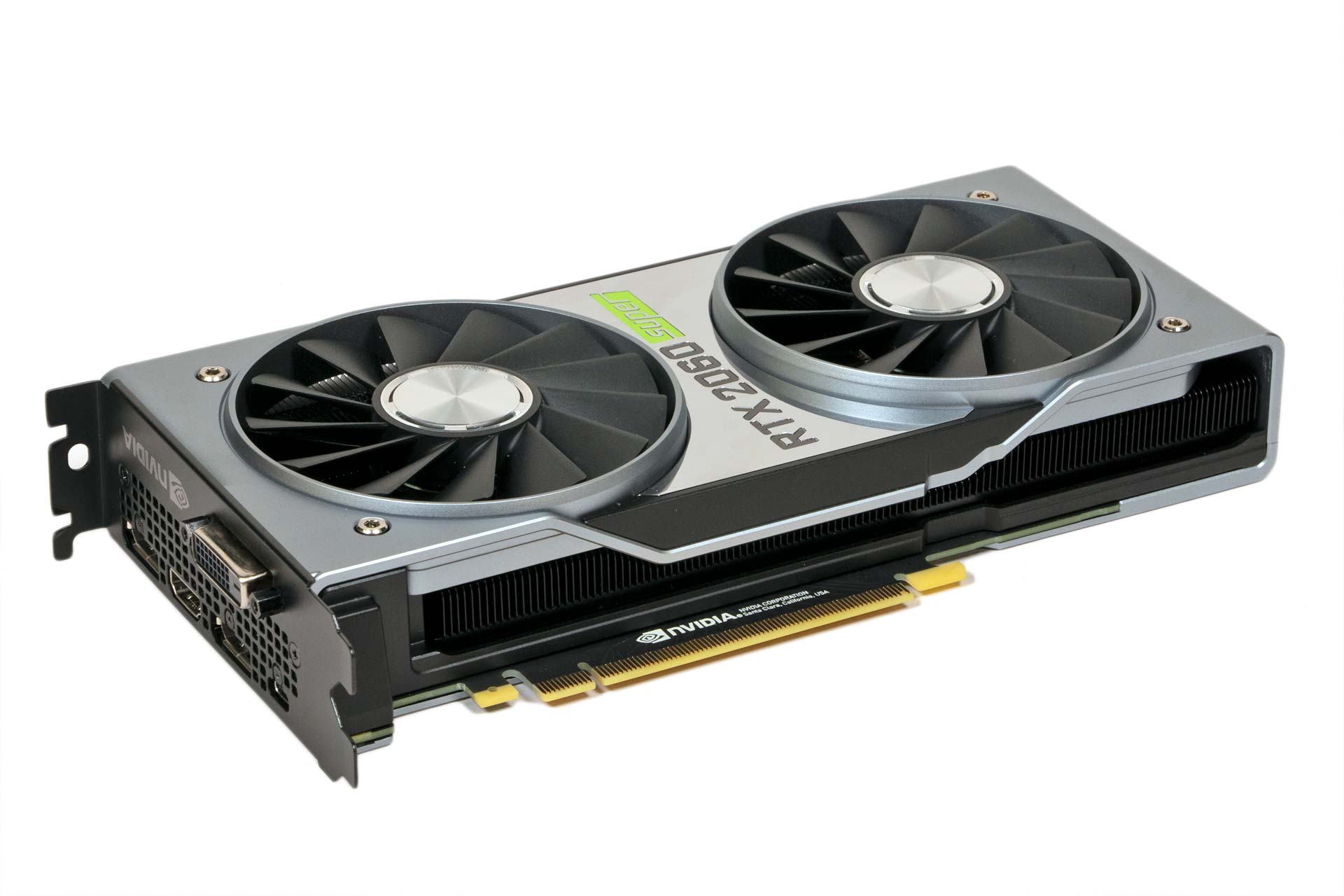
Other than this strange aesthetic tweak, there’s nothing for us to complain about. The card is very well built and reassuringly heavy. The full-cover backplate blends seamlessly into the rest of the design and will help dissipate heat.
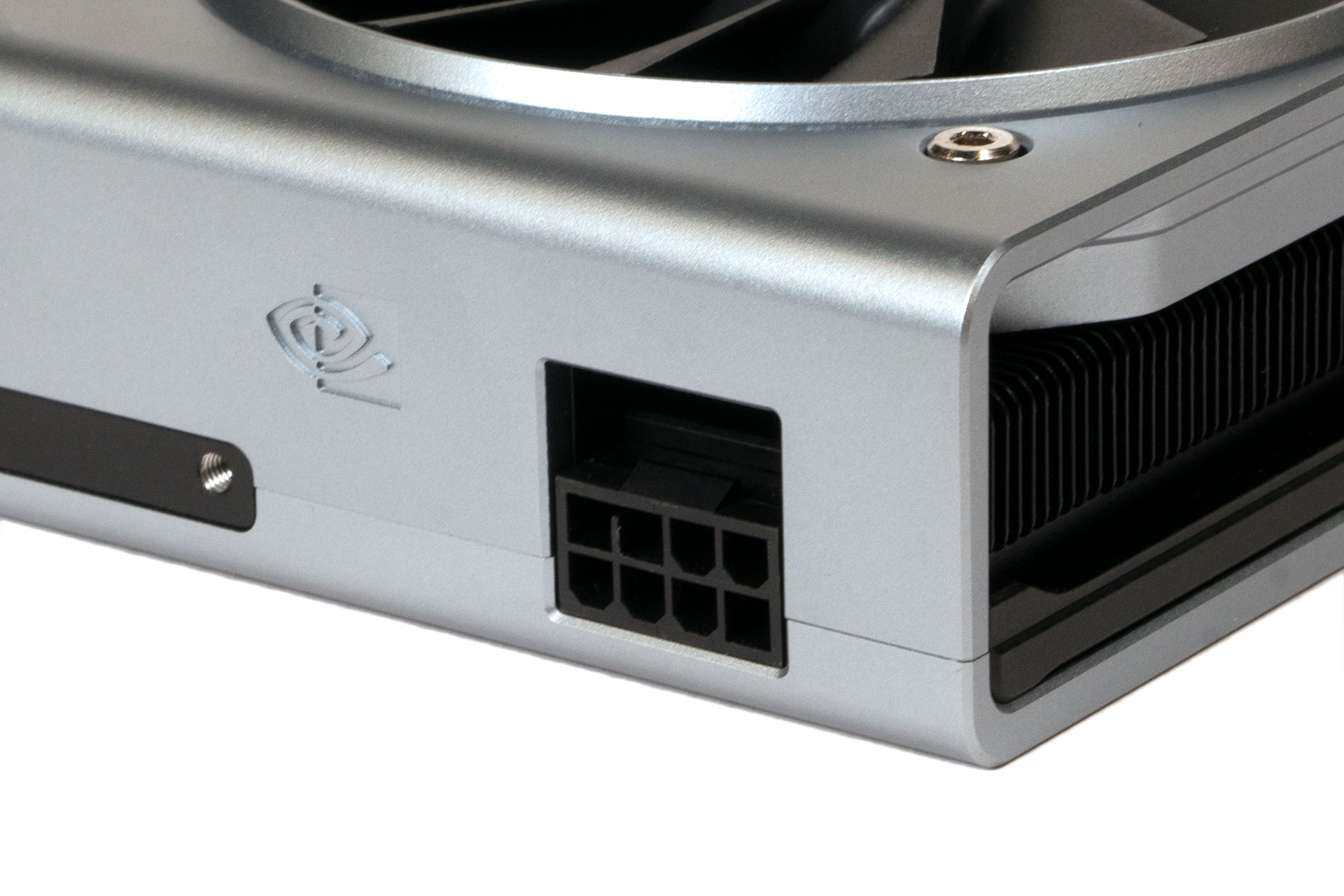
The card takes a single eight-pin PCIe plug (150W capacity) at the front side (not the usual top position), and this is sufficient for a 175W part since the PCIe slot can deliver up to 75W too.
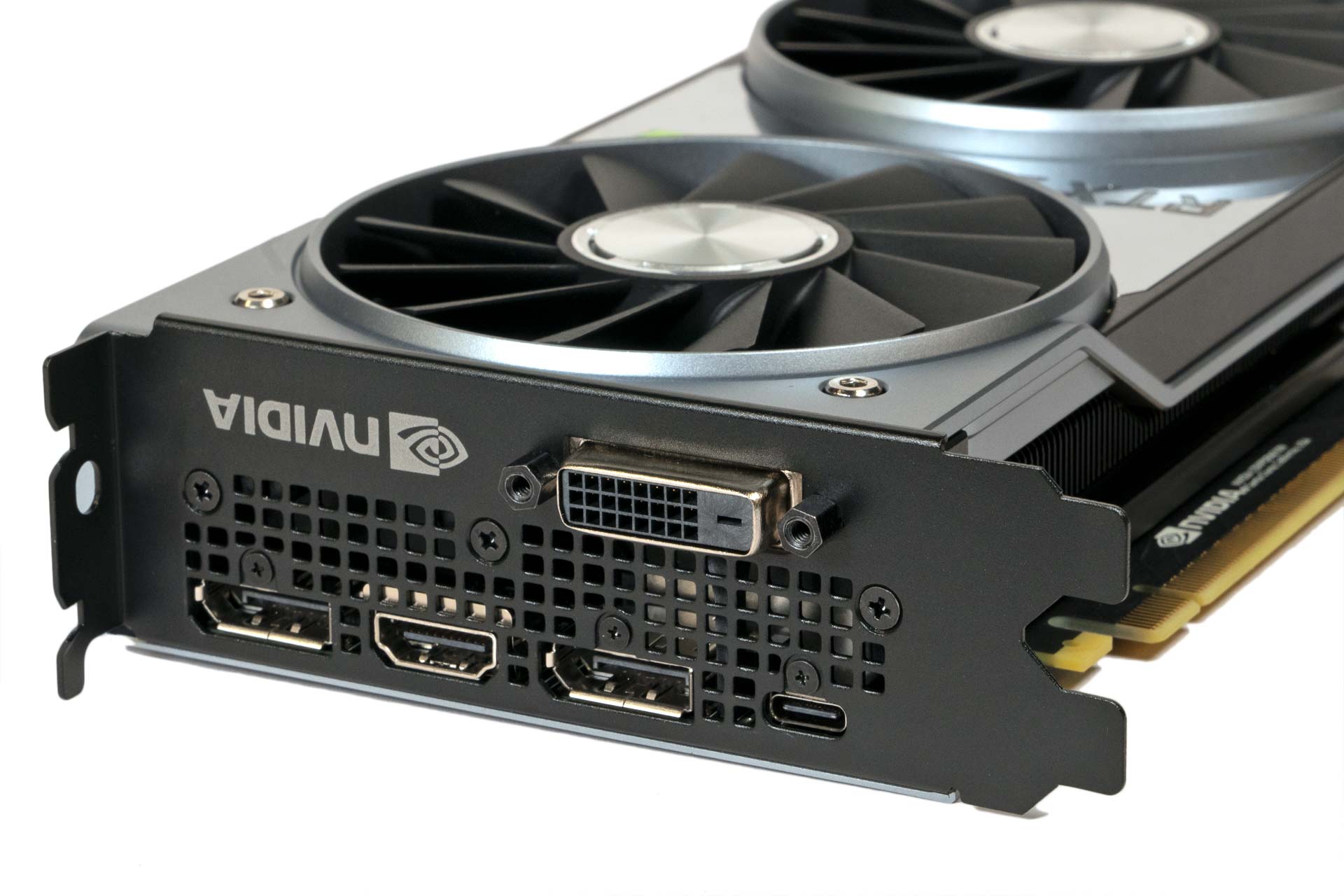
Dual DisplayPort 1.4 headers are joined by one HDMI 2.0b port, and Nvidia continues to support legacy monitors with its fourth output, a dual-link DVI-D header. The USB-C port is a VirtualLink connector that can deliver power, data, and display signals all at once to next-gen VR headsets. This adds up to 27W to the card’s power requirements not counted within the 175W limit.
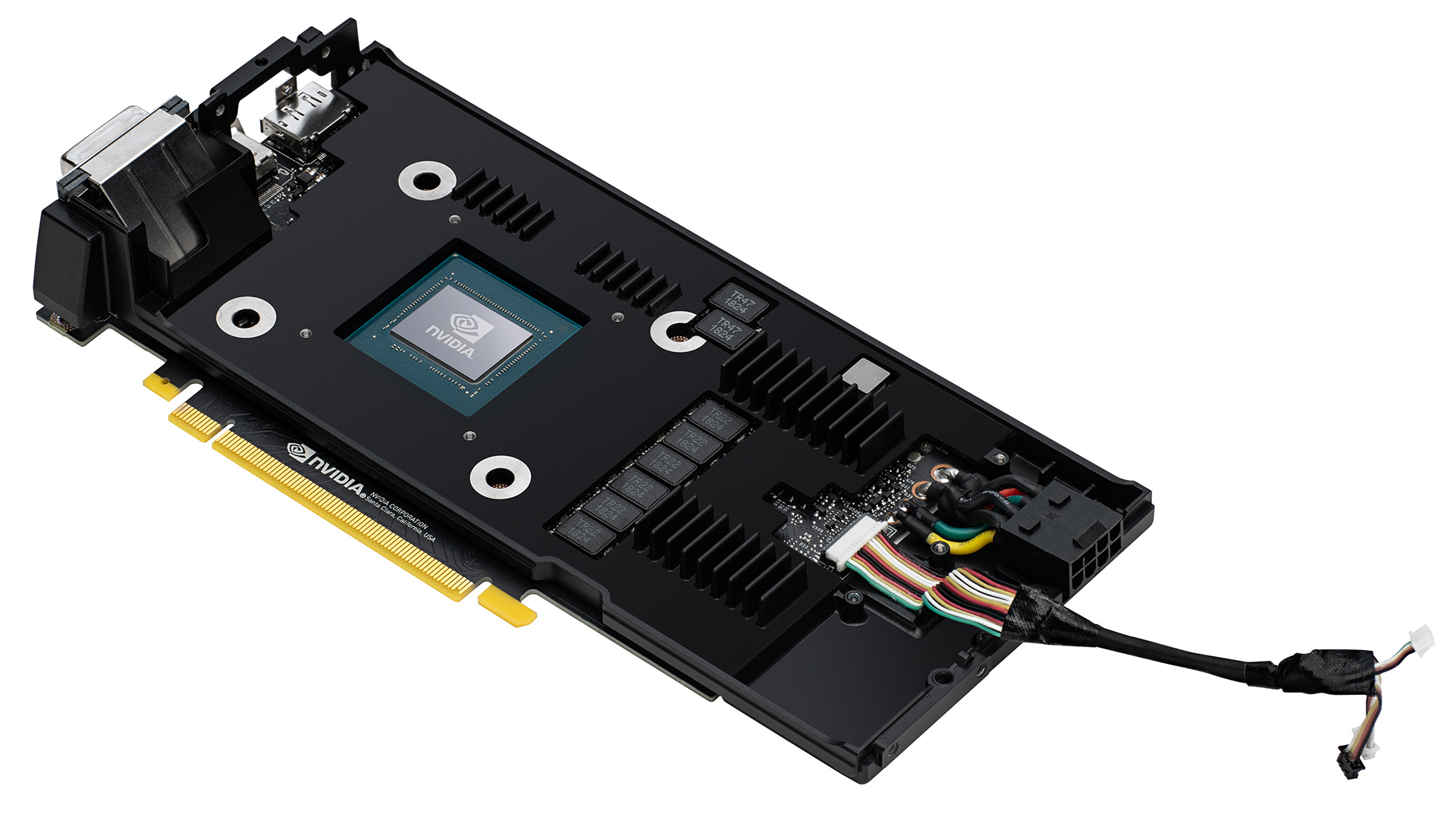
The cooler on this card is not a vapour chamber like it is on the larger dual-fan FE designs, but we’ve seen it be used successfully in the past. For those of us who like to disassemble and service their cards, it’s a bit of a nightmare, but for everyone else it does at least make very efficient use of space in terms of how much volume is filled by copper and aluminium. The two axial fans remain on at all times and exhaust heat through the top and bottom of the card (into your case and against your motherboard), so factor that into your build planning. A metal contact plate provides direct cooling via thermal padding to the memory and VRM components.
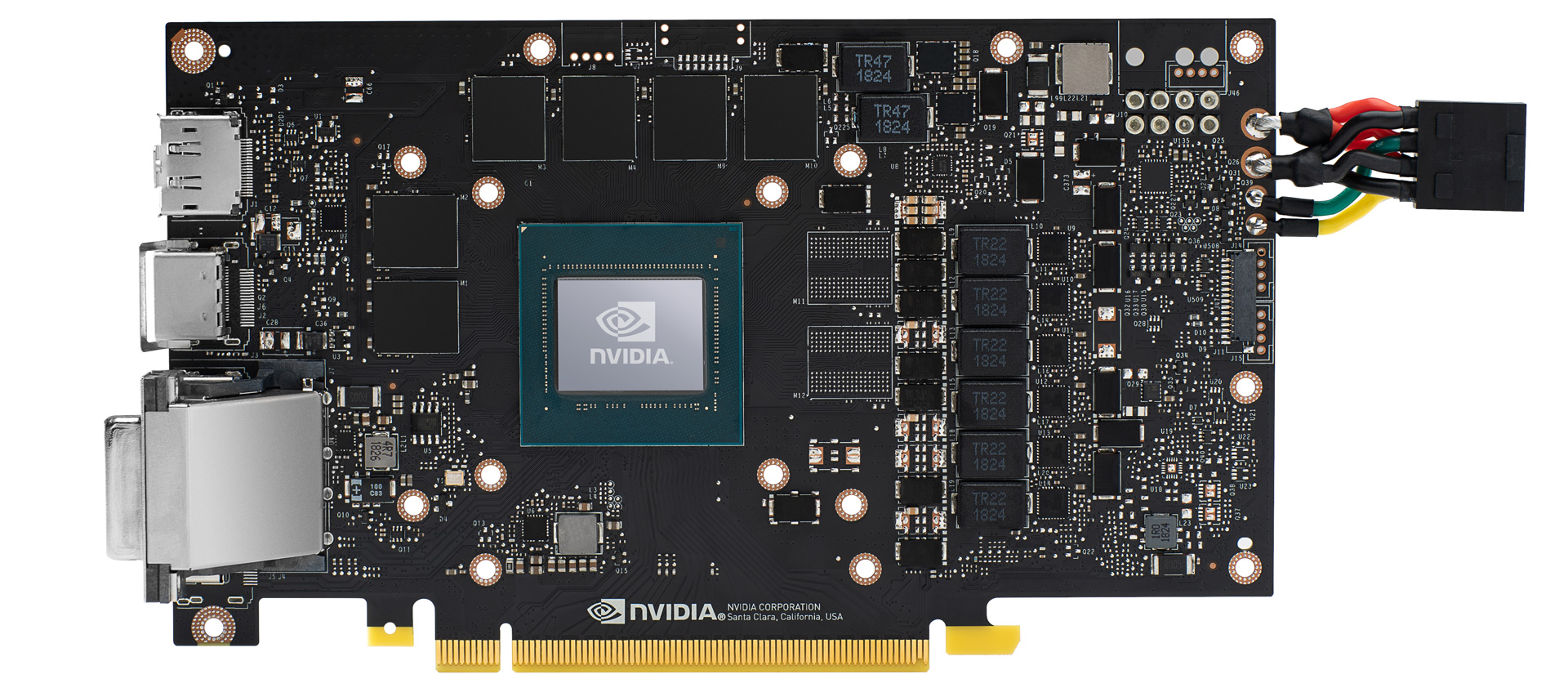
For this variant of the TU106 GPU, Nvidia is no longer separating its silicon into A and non-A variants, suggesting that Turing die yields quality have improved to the point where this is no longer necessary. As such, all RTX 2060 Super cards should have the same TU106-410-A1 labelling, though board partners are of course likely to have their own binning methods in order to determine which chips are used in which cards. Coming back to the card here, Nvidia’s continued use of the older design means the RTX 2060 Super has a 6+2 phase power setup.
As a Founders Edition card, this bit of kit comes with a three-year warranty from Nvidia, which is a nice step up from the default of two years.
Specifications
- Graphics processor Nvidia GeForce RTX 2060 Super, 1,470MHz (1,650MHz boost)
- Pipeline 2,176 stream processors, 34 RT Cores, 272 Tensor Cores, 136 texture units, 64 ROPs
- Memory 8GB GDDR6, 14Gbps effective
- Bandwidth 448GB/sec, 256-bit interface
- Compatibility DirectX 12, Vulkan, OpenGL 4.5
- Outputs 2 x DisplayPort 1.4, 1 x dual-link DVI-D, 1 x HDMI 2.0b, 1 x USB-C VirtualLink
- Power connections 1 x eight-pin PCIe, front-mounted
- Size 229mm long, 115mm tall, dual-slot
- Warranty Three years

MSI MPG Velox 100R Chassis Review
October 14 2021 | 15:04

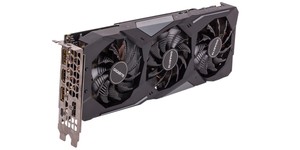
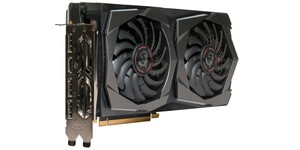
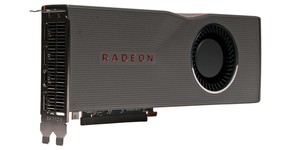




Want to comment? Please log in.